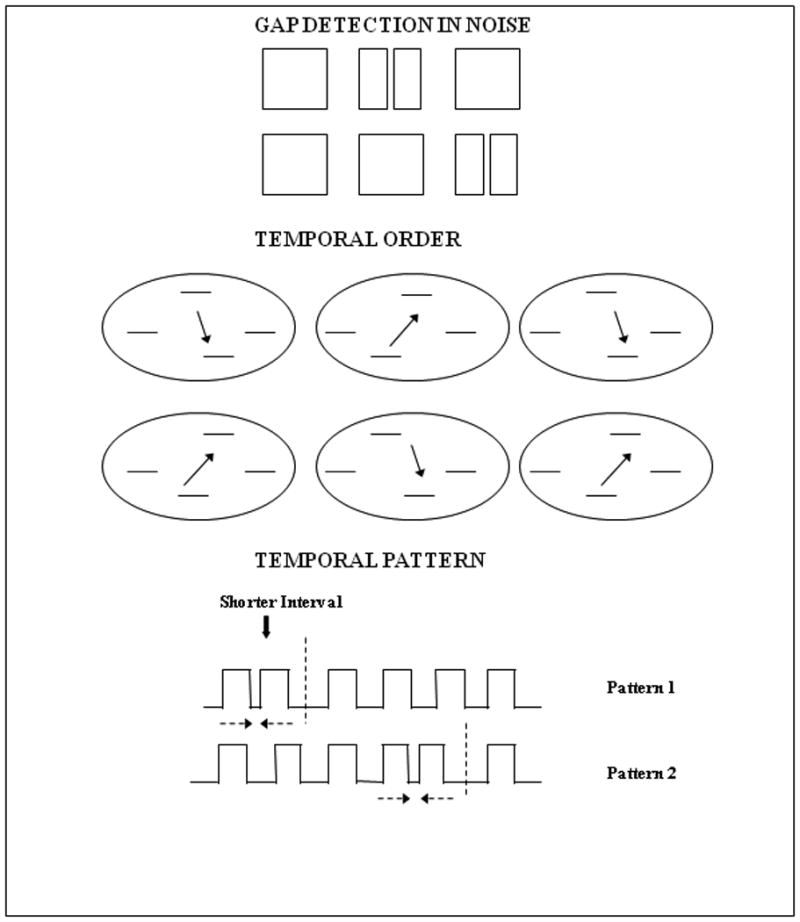Figure 1.

Schematic depiction of the three tests of basic auditory ability used in the study. In the gap detection and temporal order tests the listeners were asked to pick one of the last two intervals that was different from the first (standard). For the gap detection test (top), a silent gap of variable duration was inserted into one of the last two intervals of broadband noise. For the temporal order test (bottom), the listeners discriminated the stimuli based on the direction of frequency change of the middle two tones. For the temporal pattern test (middle), they were required to determine whether a shorter temporal interval between a series of 6 consecutive tones appeared in the first or the last half of the tone sequence.
